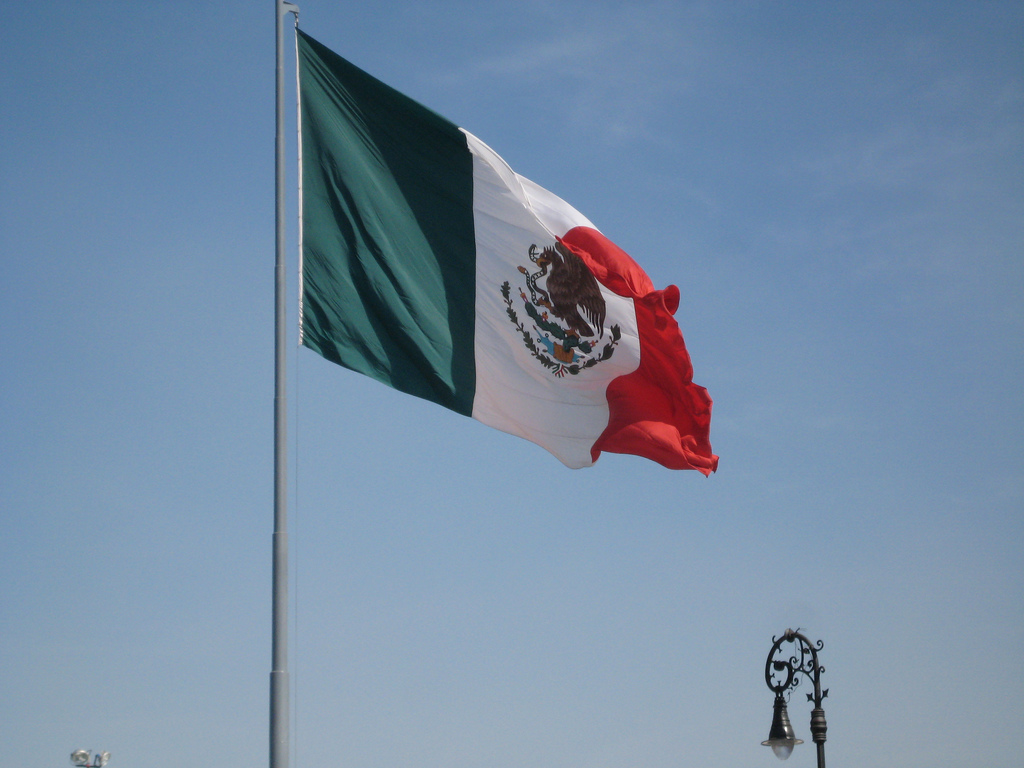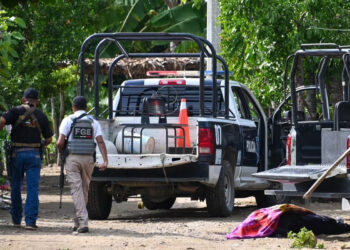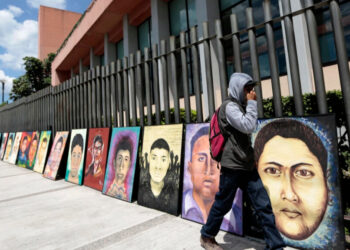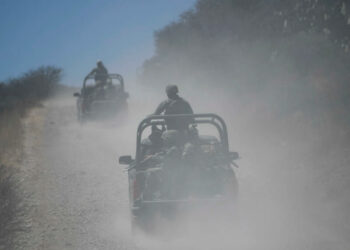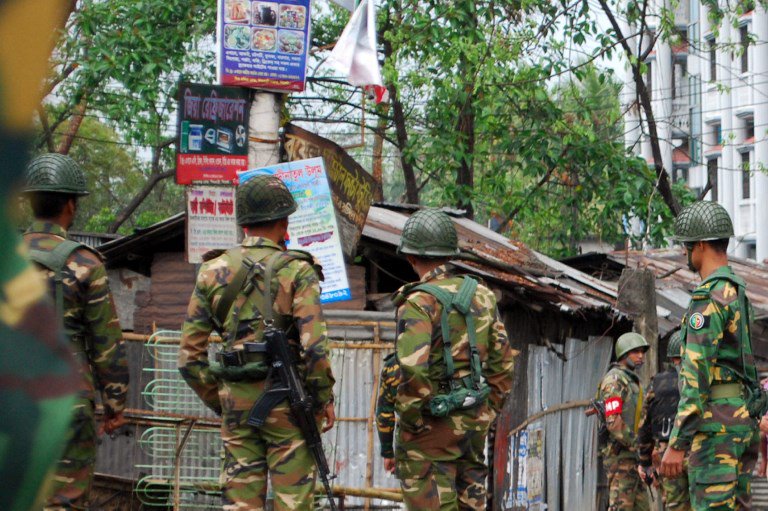On July 1, Mexico will hold the largest election in the country’s history. There are almost 88 million voters who will be able to vote around the country and more than 3,000 positions up for grabs. The most important race in the country is the race for the presidency. As Mexico faced its deadliest year on record in 2017 and corruption continues to be a major problem, four presidential candidates are attempting to prove to Mexicans that they will tackle the issues that matter most to the country.
The current front-runner in the race is Andres Manuel Lopez Obrador, a third-time presidential candidate and former mayor of Mexico City, who is running for the coalition “Together We Make History” led by his newly created party Movement for National Regeneration (MORENA).
His main competitor is Ricardo Anaya, the former president of the center-right National Action Party (PAN), a candidate for the coalition “For Mexico to the Front,” which includes the party Lopez Obrador used to be a part of, the Party of the Democratic Revolution (PRD).
Polling just behind Anaya is Jose Antonio Meade, a civil servant representing the ruling centrist Institutional Revolutionary Party (PRI), a party that ruled the country in a limited democracy for 71 years. Then in last place, there is the independent candidate and former governor of the state of Nuevo Leon, Jaime “El Bronco” Rodriguez Calderon.
This election, in addition to being the largest election in the country’s history, is particularly historic due to the presence of a series of trends that set it apart from all previous years. These trends are noticeable shifts in the country’s democratic trajectory and could have repercussions, whether negative or positive, for years to come.
The Political Violence
In this election cycle, there has been an unprecedented amount of political assassinations throughout the country. There have been more than 90 assassinations of politically active individuals since the electoral process began, according to a report published on May 10 by the political consulting company Etellekt. Included in the figure are 36 candidates who were assassinated as they were running for office.
The problem has been affecting almost exclusively local elections. In an analysis of the assassinations that occurred between September of last year and April 8, the main states that are affected by the violence are Guerrero with 20 assassinations, Veracruz with 10, the state of Mexico with 9, Puebla with 8, and Michoacan with 6. All parties are affected by the issue. Etellekt’s data for the same period shows that 13 politicians aligned with the PRI were assassinated, ten with the PRD, seven with the PAN, six with MORENA, and five with the Citizens Movement.
The problem became so bad in the state of Guerrero that the Bishop Salvador Rangel Mendoza had made a truce with local armed organizations in an effort to stop the violence against politicians.
In addition to the assassinations, there have been 212 known non-lethal aggressions made against political figures or their family, according to Etellekt.
The problem has been grave throughout the years as violence in the country increased, but this year the problem appears to be especially worse. Those behind the murders are suspected to be elements of organized crime.
After the drug war was launched by Felipe Calderon right after taking office in 2006, the attacks on authorities, candidates, and political activist rose significantly and have never recovered, according to a study by the academics Guillermo Trejo and Sandra Ley. In the same study, which looks at the time period of 1995 to 2014, the authors show that 83.2 percent of those attacks took place on the municipal level.
Laura Carlsen, the Director of the Americas program at the Center for International Policy, said the assassinations that are taking place on the local level are a direct result of the war on drug strategy, which has caused the splintering off of smaller cartels that control territory on the local level. Carlsen added that this trend is detrimental to Mexico’s democracy.
“The violence is a real problem in the sense that it’s creating a climate in which you cannot really carry out normal elections. If they kill the candidate, first of all, the political rights of the people are violated because they could no longer vote for the person who was assassinated… and second of all it’s a message to not exercise a free vote,” Carlsen told The Globe Post.
The Left-Right Coalition
A new feature in this election is that the current candidate in second place, Anaya, is running as a candidate for a coalition that includes a conservative party, the PAN, and two traditionally left-wing parties, the PRD and the Citizens Movement. What makes the coalition even more historic is that the PAN and PRD are the second and third largest political parties in the chamber of deputies. Electoral coalitions are common in Mexico, but they usually involve a large party and about two smaller parties from the same side of the ideological spectrum.
For this presidential election, the parties have formed a coalition on the national level. They have, however, formed electoral coalitions for certain state elections before.
The reason that the alliance is just occurring now is for two reasons, said Kenneth Greene, a professor of Government Studies at The University of Texas at Austin. “First, ideological differences are less stark now than they were in the past as the market model is firmly in place in Mexico. Second, the formation of MORENA means that the PRD is severely threatened.”
The PRD is constantly hemorrhaging members and politicians to the newly formed MORENA, which was founded by Lopez Obrador, the former president of the party and the party’s presidential candidate in 2006 and 2012. As a result, the PRD formed the coalition in an effort to survive, because, as Greene states, the coalition is the party’s best chance to help keep itself relevant by having some representation in Congress and staying a vital player in Mexico City politics.
Carlsen sees the coalition as an “opportunistic and pragmatic move on the part of what’s left of the PRD leadership,” and an “effort of the PAN to get as much support as possible in defeating Lopez Obrador.”
There is also another left-right coalition present in the 2018 presidential election, the coalition of the front-runner Lopez Obrador, “Together We Make History” includes the Social Encounter Party (PES), a socially conservative party. What makes this coalition different than the one made between the PRD and PAN is that the PES is very small and only holds ten seats in Congress, making it the 8th largest party represented there.
The Large Lead In the Polls
A May 2018 poll taken by El Financiero newspaper showed Lopez Obrador with a 20 point lead. Lopez Obrador has started with a large lead in September, when he was the only definite presidential candidate and all of the other parties were still in the process of picking their candidates. Since October of last year, according to Bloomberg’s poll tracker, Lopez Obrador has risen in the polls and has not lost his lead.
“López Obrador’s lead is larger and has lasted longer than in any of the other presidential elections since 2000. Large leads are not terribly unusual in new democracies that can experience significant electoral volatility during the campaign period, but López Obrador’s lead has persisted and even increased over the past couple of months,” Greene told The Globe Post.
Carlsen believes that the reason for Lopez Obrador’s massive lead in the polls is because of large portions of the Mexican population who are disenchanted with the governance of the PRI and PAN. “Since the PRI and the PAN have governed, and have…particularly have been in charge of both economic and security policy, and its been the same economic and security policy over the past decade, people are sick of it.”
But Greene expects that as election day approaches, Lopez Obrador’s lead will close for two reasons. The first, he says, is that voters will coordinate their support behind one of the anti-Lopez Obrador candidates, and the second is that Anaya has a significant paid advertisement advantage over Lopez Obrador, and voters have been historically susceptible to this type of advertising.
The Independent Candidates
In prior presidential races a candidate could only be on the ballot if they were allied with a political party. In the 2018 elections, however, due to the electoral reforms passed in 2014, independent candidates could attempt to run for the presidency as long as they were able to receive enough signatures (equivalent to 1 percent of registered voters) in the right amount of time.
Only the former first lady Margarita Zavala and the first independent governor of the state of Nuevo Leon Jaime “El Bronco” Rodriguez Calderon were deemed to meet the necessary requirements. Rodriguez Calderon was initially not found to meet all the requirements, but the highest electoral power ruled in his favor on April 10, allowing him to be on the ballot and join the campaign.
Even though both were granted to be on the ballot, Zavala dropped out of the race on May 16 because, as she stated, she did not see a successful outcome with the way things currently are for independent candidates. At the time of Zavala’s departure, both her and Rodriguez Calderon were polling low.
Rodriguez Calderon is known for his off the cuff comments, stating in the first presidential debate that he would have the hands of thieves literally cut off. Even with his words making splashes in the media, there is little chance he will make a real mark in the polls. Since he started campaigning, he has not polled over 3 percent, according to Bloomberg’s poll tracker.
Though Zavala and Rodriguez Calderon did not fair well, it’s likely that neither would any other independent candidate.
“Under current law, the independent candidates do not have access to sufficient campaign funds or advertising time to gain a significant share of the vote,” Greene said.
Greene expects that there will be more legislation passed in regards to independents that could make them into a more significant force in Mexican politics in years to come.


